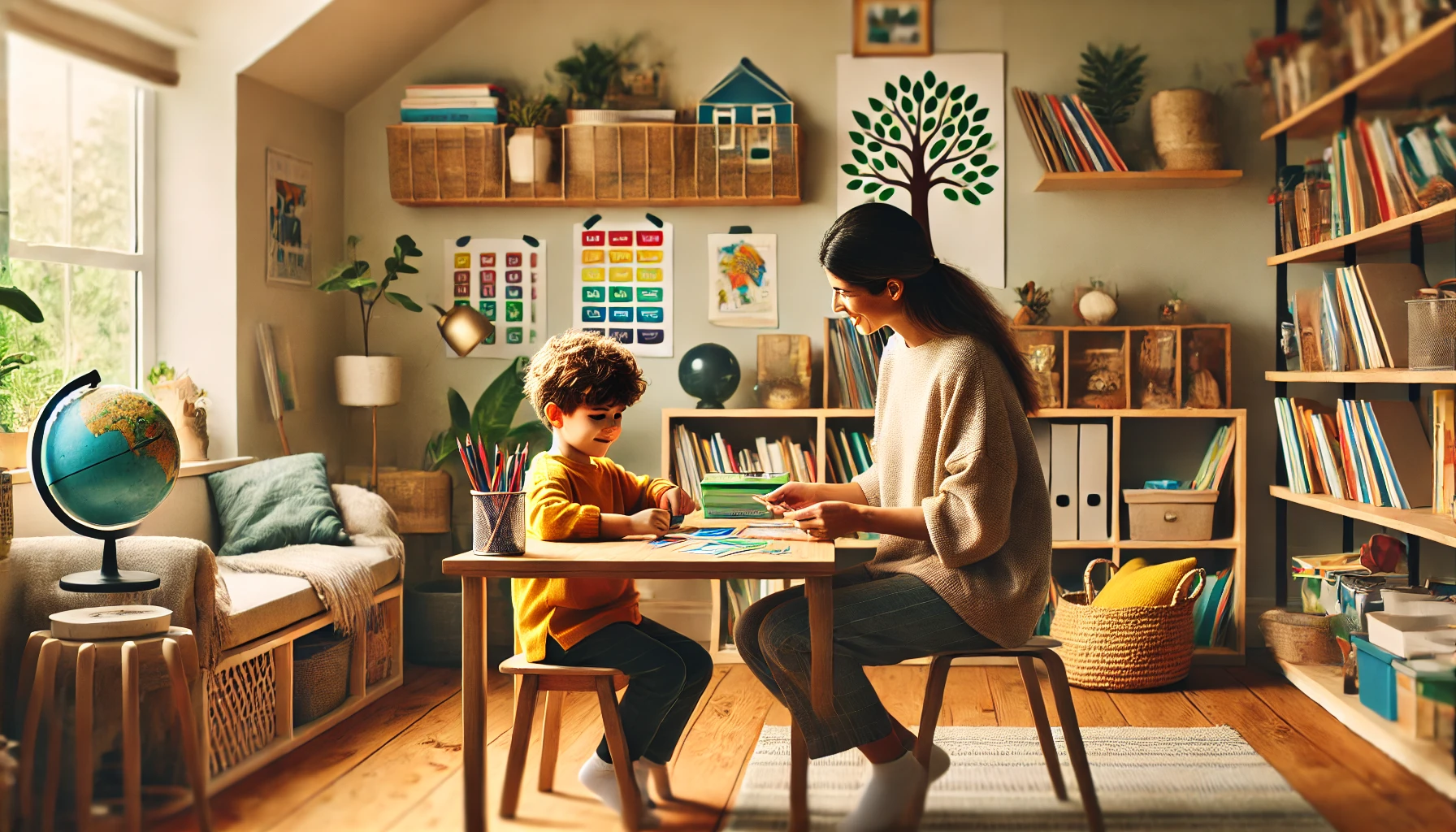Establishing a structured yet flexible learning routine at home is essential for young children’s development. Between the ages of 2 and 5, children thrive on consistency, but they also need room for creativity and exploration. A well-balanced routine helps improve focus, independence, and cognitive skills while making learning enjoyable.
In this guide, we’ll explore how to design a daily learning routine that nurtures your child’s growth in a stress-free and engaging way.
The Importance of a Learning Routine for Young Children
A structured learning routine offers several benefits, including:
- Predictability: Children feel safe when they know what to expect each day.
- Cognitive Development: A routine supports brain growth and skill-building.
- Independence: Children learn to complete tasks on their own over time.
- Emotional Stability: Regular activities provide comfort and reduce anxiety.
- Better Parent-Child Bonding: Learning together strengthens relationships.
By creating a daily schedule that balances structured activities with free play, you can make learning more effective and enjoyable.
Step 1: Understanding Your Child’s Learning Style
Each child learns differently, so it’s important to observe their preferences:
- Visual Learners: Prefer pictures, books, and charts.
- Auditory Learners: Learn best through songs, stories, and conversations.
- Kinesthetic Learners: Need hands-on activities and movement to grasp concepts.
Once you identify your child’s style, you can tailor activities to suit their needs.
Step 2: Setting Up a Learning Space
Creating a designated learning space helps children associate the area with focus and engagement.
Essentials for a Home Learning Area:
✔️ Low shelves with books and toys for easy access
✔️ A small table and chair for writing or crafts
✔️ A cozy reading nook with pillows and soft lighting
✔️ A whiteboard or chalkboard for drawing and writing practice
✔️ Baskets for organizing learning materials
Even a small corner of the house can be turned into a fun and inviting learning zone!
Step 3: Designing a Daily Learning Routine
A great routine should have a mix of structured and unstructured activities. Here’s an example of a balanced daily learning schedule for children aged 2 to 5:
🌞 Morning Routine (8:00 AM – 10:00 AM)
🔹 Wake Up & Hygiene: Brush teeth, wash hands, and get dressed.
🔹 Breakfast & Conversation: Talk about the day’s plan in simple terms.
🔹 Circle Time (9:30 AM): Sing songs, read a short book, and discuss the weather.
📚 Learning Time (10:00 AM – 12:00 PM)
🔹 Educational Play: Puzzles, sorting games, or flashcards.
🔹 Fine Motor Skills Practice: Drawing, playdough, or threading beads.
🔹 Outdoor Exploration: A short walk, nature scavenger hunt, or playing with chalk.
🍽️ Lunch & Rest (12:00 PM – 2:00 PM)
🔹 Lunchtime: Involve your child in simple meal prep.
🔹 Quiet Time: Reading books or a short nap.
🎨 Afternoon Activities (2:00 PM – 4:00 PM)
🔹 Creative Play: Arts and crafts, building blocks, or role-playing.
🔹 Music & Movement: Dancing, singing, or playing instruments.
🔹 Practical Life Skills: Simple chores like folding clothes or setting the table.
🌙 Evening Routine (4:00 PM – 7:00 PM)
🔹 Dinner Together: Encourage discussions about the day.
🔹 Family Bonding: Storytime, puzzles, or gentle play.
🔹 Bedtime Rituals: Bath, pajamas, and a bedtime story.
Step 4: Using Play as a Learning Tool
Children learn best through play. Here are some play-based learning ideas:
- Letter Hunt: Hide letters around the house and let your child find and name them.
- Counting with Objects: Use toys, beans, or buttons to practice counting.
- Pretend Grocery Store: Use toy money to “buy” items and practice math skills.
- Nature Exploration: Collect leaves and rocks and discuss their textures.
Make learning interactive and fun, so your child stays engaged!
Step 5: Encouraging Independence and Responsibility
Teaching independence early builds confidence. Here’s how you can encourage it:
✔️ Let your child choose between two activities (e.g., “Do you want to read or color?”).
✔️ Give them small responsibilities, like putting toys away or wiping the table.
✔️ Use visual schedules (with pictures) to help them understand their daily routine.
✔️ Praise their efforts to build a sense of achievement.
Children thrive when they feel capable and empowered!
Step 6: Adapting the Routine for Flexibility
While consistency is key, be open to adjustments based on:
- Your child’s mood: Some days, they may need more rest or movement.
- Special occasions: Holidays or visits from family can alter the schedule.
- New interests: If your child suddenly loves dinosaurs, incorporate dinosaur-themed learning!
The goal is to provide structure without rigidity, so learning remains enjoyable.
Final Thoughts: Making Learning at Home a Joyful Experience
A well-structured home learning routine helps young children develop essential skills while keeping learning fun and stress-free. By incorporating a mix of structured activities, creative play, and flexibility, parents can foster a positive and engaging learning environment.
Key Takeaways:
✔️ Keep the routine simple and age-appropriate.
✔️ Provide a balanced mix of structured and free play.
✔️ Adjust activities based on your child’s interests and energy levels.
✔️ Encourage independence and decision-making.
✔️ Most importantly—make it fun! 🎉
By following these steps, you can create a home routine that supports learning, creativity, and growth—all while strengthening your bond with your child!
